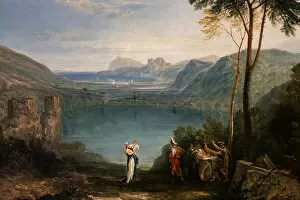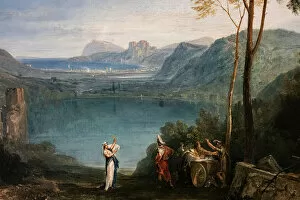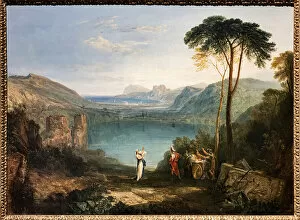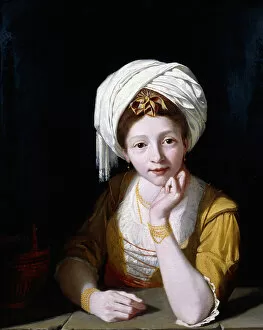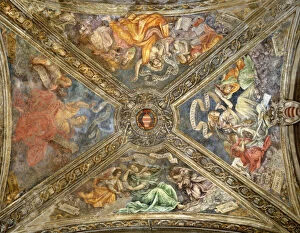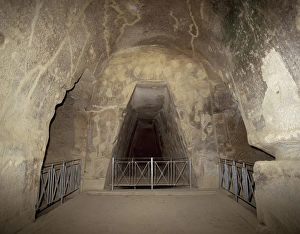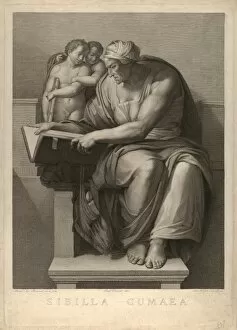Cumaean Collection
The Cumaean Sibyl, a figure steeped in ancient mythology and art, has captivated artists for centuries
All Professionally Made to Order for Quick Shipping
The Cumaean Sibyl, a figure steeped in ancient mythology and art, has captivated artists for centuries. Depicted in various forms, she is often portrayed as a wise and prophetic woman with deep knowledge of the future. One such depiction can be found on the exterior of the right wing of the Ghent Altarpiece from 1432. Painted by an unknown artist using oil on panel, this portrayal showcases the Cumaean Sibyl's enigmatic presence. Her gaze is intense and her expression holds secrets untold. On the left wing of the same altarpiece, we find another representation of both the Erythraean Sibyl and the Cumaean Sibyl. These two figures stand side by side, each exuding their own unique aura. Their inclusion adds an air of mysticism to this masterpiece. In another artwork titled "The Lake of Avernus, " painted in 1814-15 by an anonymous artist using oil on canvas, we see Aeneas alongside the Cumaean Sybil. The lake serves as a backdrop for their encounter, symbolizing their journey into unknown realms guided by her wisdom. Moving away from traditional depictions, there is also a portrait titled "Portrait of a Lady as the Cumaean Sibyl" created between 1778-1789. This painting captures not only her mythical qualities but also highlights her elegance and grace as she assumes this role. Beyond paintings lies Cumae itself—a place rich in history and mythological significance. Its Acropolis boasts structures like The Greek temple of Apollo and Temple Zeus dating back to different periods—testaments to its cultural importance throughout time. Lastly, let us not forget about The Cave of the Cumaean Sibyl—an iconic location associated with her prophecies that have fascinated generations over centuries. From ancient times to modern interpretations through artistry across mediums, the Cumaean Sibyl continues to intrigue and inspire.

